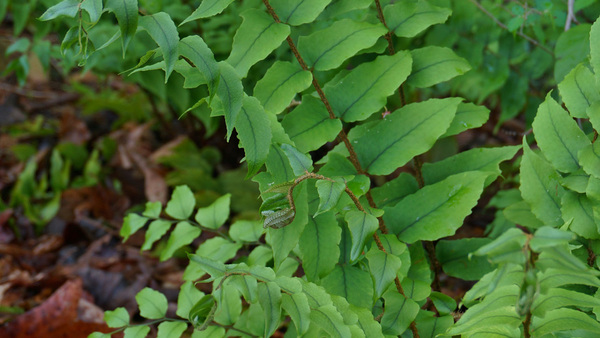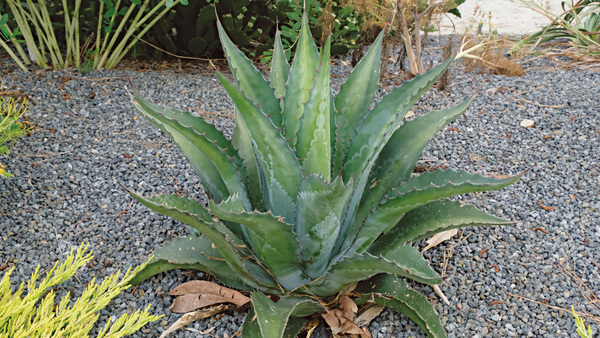
Lifelong saxifrage
Saxifraga paniculatasubsp. paniculata
Zones: 2–6
Size: 6 to 12 inches tall and 3 to 6 inches wide
Conditions: Partial shade; well-drained soil
Native range: Central Europe
Lifelong saxifrage is probably one of the easiest saxifrages to grow. Its white-edged green foliage grows in spreading rosettes, and in spring a central flower spike that can tower up to a foot tall may emerge from mature plants. Those flowers can vary in color from white to pink to yellow. This plant loves the cold, so it may sulk in hot and humid climates. It likes rocky soil, and it can thrive in a frost-tolerant pot with a very free-draining, gritty soil mix. Lifelong saxifrage is remarkably hardy and often looks best in late winter through early spring.
‘Pink Champagne’ epimedium
Epimedium ‘Pink Champagne’
Zones: 5–8
Size: 1½ to 2 feet tall and 2 to 3 feet wide
Conditions: Partial to full shade; moist to dry, well-drained soil
Native range: Hybrid
When I asked epimedium expert and breeder Darrell Probst which cross was his favorite, he led me to a
trial bed with a knee-high massive clump of a plant
he named ‘Pink Champagne’. Like most epimediums, this cultivar takes a year or two to really look awesome, but it is well worth the wait. While the pink-and-white spring-blooming flowers are really gorgeous, what
sets this plant apart is its dramatic mottled leaves that often last through most of winter, lighting up the garden during the offseason. Trimming away old foliage each spring as the new growth emerges will keep ‘Pink Champagne’ looking its best.
Christmas fern
Polystichum acrostichoides
Zones: 3–8
Size: 1 to 2 feet tall and wide
Conditions: Partial to full shade; moist to dry, well-drained soil
Native range: Eastern North America
If you’ve ever hiked in northeastern forests late in the season, then you’re familiar with this native evergreen fern. It might not have been at the top of your shopping list, since there are flashier things to choose from at the garden center in spring, but no hosta (Hosta spp. and cvs., Zones 3–8) lights up a shade garden and provides year-round interest like this fern. It looks charming in shaded areas next to hellebores (Helleborus spp. and cvs., Zones 4–9) and other woodland plants. Easy to grow, Christmas fern is very hardy, tolerates summer drought well, and is easy to care for—just trim off any tired foliage each spring as the new fiddleheads are making their first appearance.
Woolly thyme
Thymus pseudolanuginosus
Zones: 5–9
Size: 1 to 3 inches tall and 12 inches wide
Conditions: Full sun; medium to dry, well-drained soil
Native range: Europe
Top interior designers often say, “It’s the carpet that pulls any design together,” and the same can apply to our gardens. Woolly thyme is a spreading evergreen ground cover that is often overlooked but is worthy of reconsideration. A real workhorse, this perennial needs a site with full sun and excellent drainage. It’s useful along paths, in a hellstrip, or in a sunny rock garden where it can be a star. Its trailing, dense growth carpets the ground, looking like a cushion. A mass of pink-purple flowers appears in summer. As a bonus, the green foliage takes on a purple blush in winter, giving this plant true four-season interest.
Matt Mattus is a regional reporter for FineGardening.com. The author of two gardening books, he lives and gardens in Worcester, Massachusetts.





















Comments
Log in or create an account to post a comment.
Sign up Log in